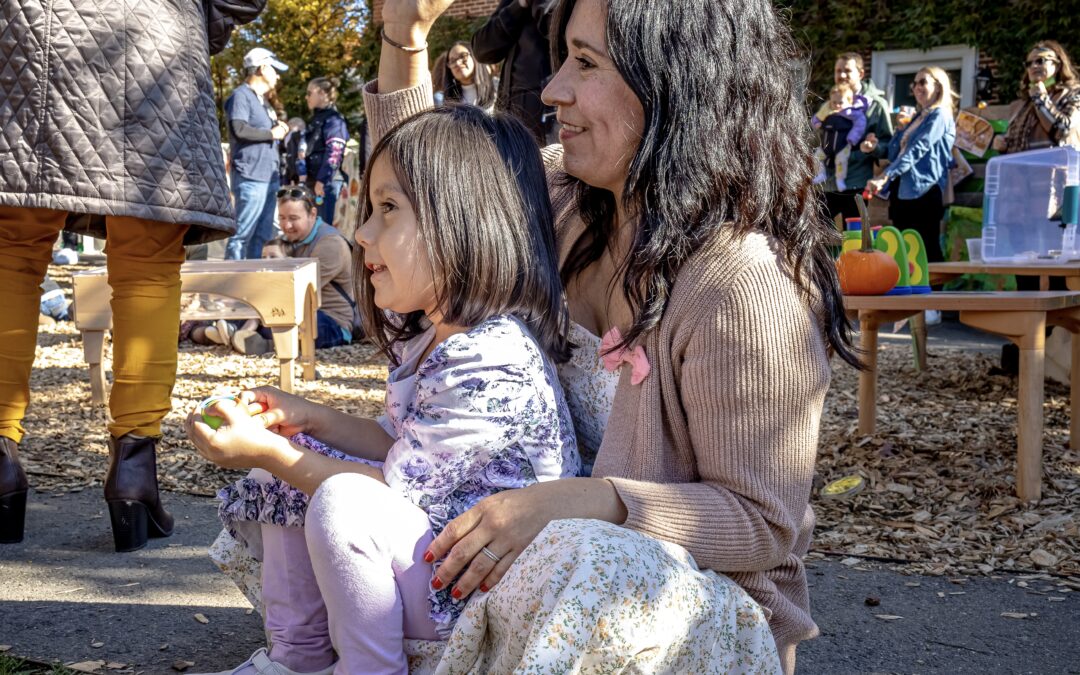“When children engage in challenging behaviors, we tend to use our language as a means to discipline and control; instead, we should be promoting children’s well-being, growth, and autonomy through intentional and positive language.”
What You’ll Learn
- What is intentional, positive language?
- How does the use of my language support my child’s development?
- What intentional and positive phrases should I use?
“STOP. DON’T KICK YOUR SISTER. I SAID STOP, WE DO NOT KICK IN THIS HOUSE.” …How many times have you used this language to put a stop to challenging behaviors? And, be honest, when has it ever really worked? Don’t worry, we have all been there—this is a natural response! Unfortunately though, when we use this language, we often find ourselves repeating the same demand, only to become more frustrated and watch our child continue the behavior we so desperately want to stop. Let’s figure out how we can adjust our language to be more successful in these situations.
The Power of Positive Language
The language we use matters and can “build a foundation for success” (Tip-Top Brain, 2021) in early childhood development. When children engage in challenging behaviors, we tend to use our language as a means to discipline and control. Instead, we should be promoting children’s well-being, growth, and autonomy through intentional and positive language:
“I hear you and I am listening.”
“I believe in you.”
“We will figure this out together.”
Using simple and positive language is a great way to set boundaries around challenging behaviors while empowering your child to make appropriate choices. The use of intentional and positive language also:
- Boosts children’s self-esteem and positive self-perception
- Fosters strong relationships and helps create a bond of mutual trust and respect
- Promotes a safe and supportive environment for growth
- Allows children to practice skills in problem-solving, self-regulation, collaboration, and social awareness
- Encourages positive behaviors
Positive Language in Practice
Now that we know the power of positive language, let’s discuss how you can implement this at home with these tips:
- Keep a neutral, calm, and non-threatening tone of voice → Try not to let the frustration of the situation show through your voice
- Speak clearly using short and age-appropriate instructions
- Talk to your child at their level
- Replace “don’t” with “do” → Young children have a difficult time understanding the concept of negatives and often miss the “don’t” or “stop” at the beginning of instructions
- Offer choices
- Tell your child “when” → Acknowledge your child’s request and explain
- Use “first-then” language → These types of statements provide clear and direct instruction
- Given your child time to process and remember → Young children need time to process what is being requested of them (Count to 3, remain calm, and allow your child to process)
Referring back to my example of an ineffective response to a challenging situation, let’s put some of these strategies into practice! Instead of saying, “STOP. DON’T KICK YOUR SISTER. I SAID STOP, WE DO NOT KICK IN THIS HOUSE,” you can try saying “Kicking hurts. Remember, we agreed that our feet are for walking.”
In the original response, you are trying to take control of the situation rather than helping your child build the skills needed to change their behavior. Your child is also only hearing the end of your demand, which translates to, “KICK YOUR SISTER. KICK IN THIS HOUSE.” In the second response, you are using a neutral, calm voice to set the boundary that kicking is not acceptable. Your response is clear, tells your child what they can do, and reminds them of the positive behavior your family has agreed upon.
I will mention here that your response may be dependent on what caused your child’s behavior. For example, if you know that your child kicked their sister in response to being able to play with a certain toy, you might say, “I see you are upset about something. How can I help?” or, “Kicking people hurts, but I see you are upset about something. Would you like to kick this pillow?” You can check out our blog post on understanding behavior as a means of communication here.
SolBe Community Language
At SolBe, our goal is to empower students; therefore, we place a lot of emphasis on the language we use. We have created a glossary of community language reflecting these methods of intentional and positive language, and are happy to share them with you here!
Empowering Takeaways
- Intentional and positive language demonstrates our respect for children and promotes children’s well-being, autonomy, and growth.
- The use of positive language benefits all areas of your child’s development.
- Challenging behaviors influence our natural responses (e.g. stop and don’t), but with practice, we can alter the language we use.
Be vibrant and keep thriving!
This article was last reviewed or updated on September 1, 2023.
References
Alter, P. J. & Conroy, M. A. (n.d.). Preventing challenging behavior in young children: Effective practices. Center for Evidence-Based Practice: Young Children with Challenging Behaviors. https://challengingbehavior.org/document/recommended-practices-preventing-challenging-behavior-in-young-children-effective-practices/
Child Mind Institute. (2022, April 14). Managing problem behaviors at home. https://childmind.org/article/managing-problem-behavior-at-home/
Foley, S. (2018). Talking with toddlers: The power of positive language. Wellan Montessori School. https://www.wellan.org/single-post/2018/03/12/talking-with-toddlers-the-power-of-positive-language
Responsive Classroom. (2012). Want positive behavior? Use positive language. https://www.responsiveclassroom.org/want-positive-behavior-use-positive-language/#:~:text=Suppose%20a%20principal%20says%20to,children%20want%20to%20cooperate%2C%20listen%2C
Strain, P., Joseph, J., Hemmeter, M. L., Barton, E., & Fox L. (2017, January). Tips for responding to challenging behavior in young children. Pyramid Equity Project. https://challengingbehavior.org/docs/PEP_Tips-responding-challenging-behavior.pdf
Tip-Top Brain. (2021). 5 Phrases we can use to support children: The awesome power of intentional language. https://tiptopbrain.com/blog/support-children-with-intentional-language/







